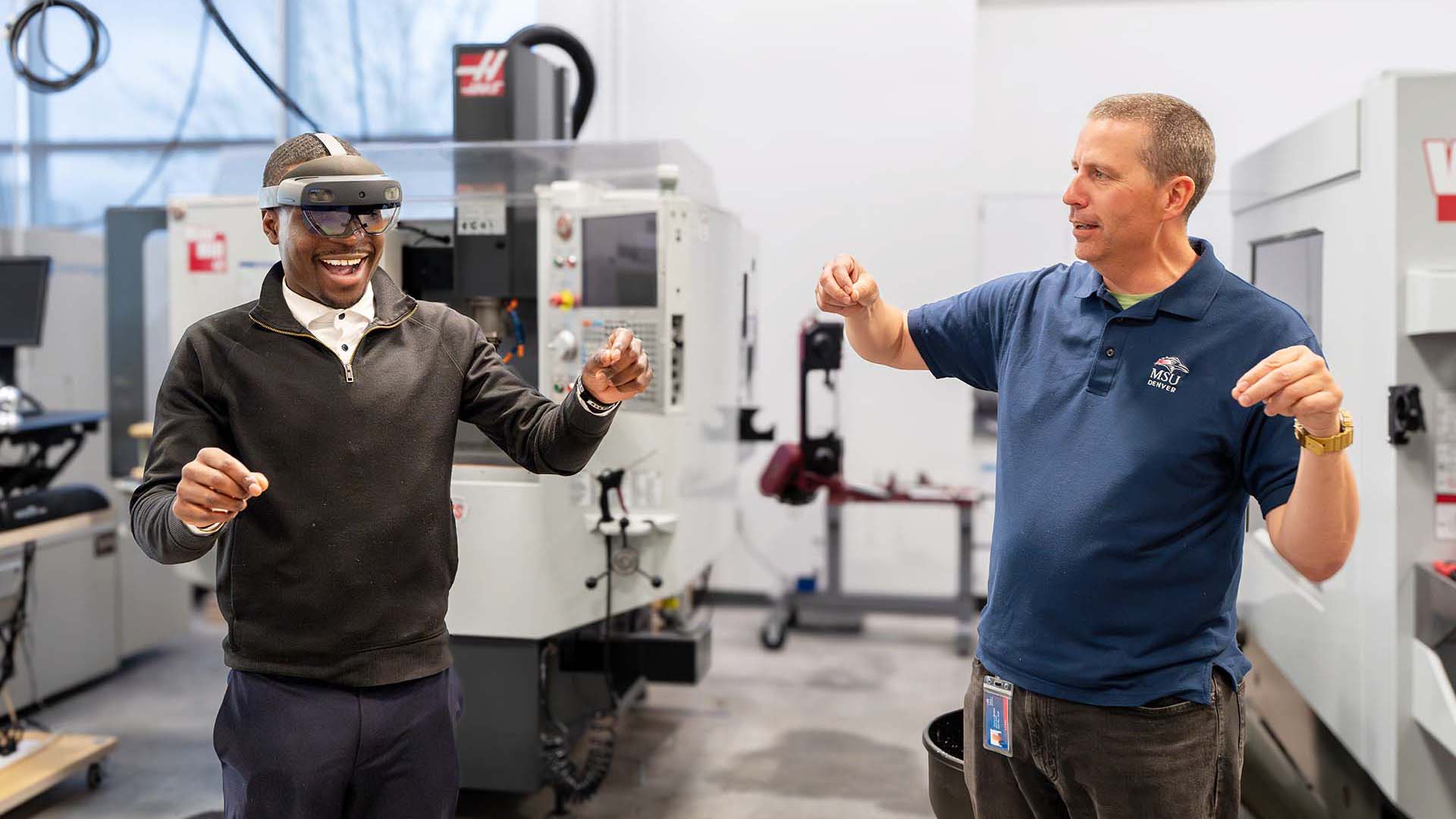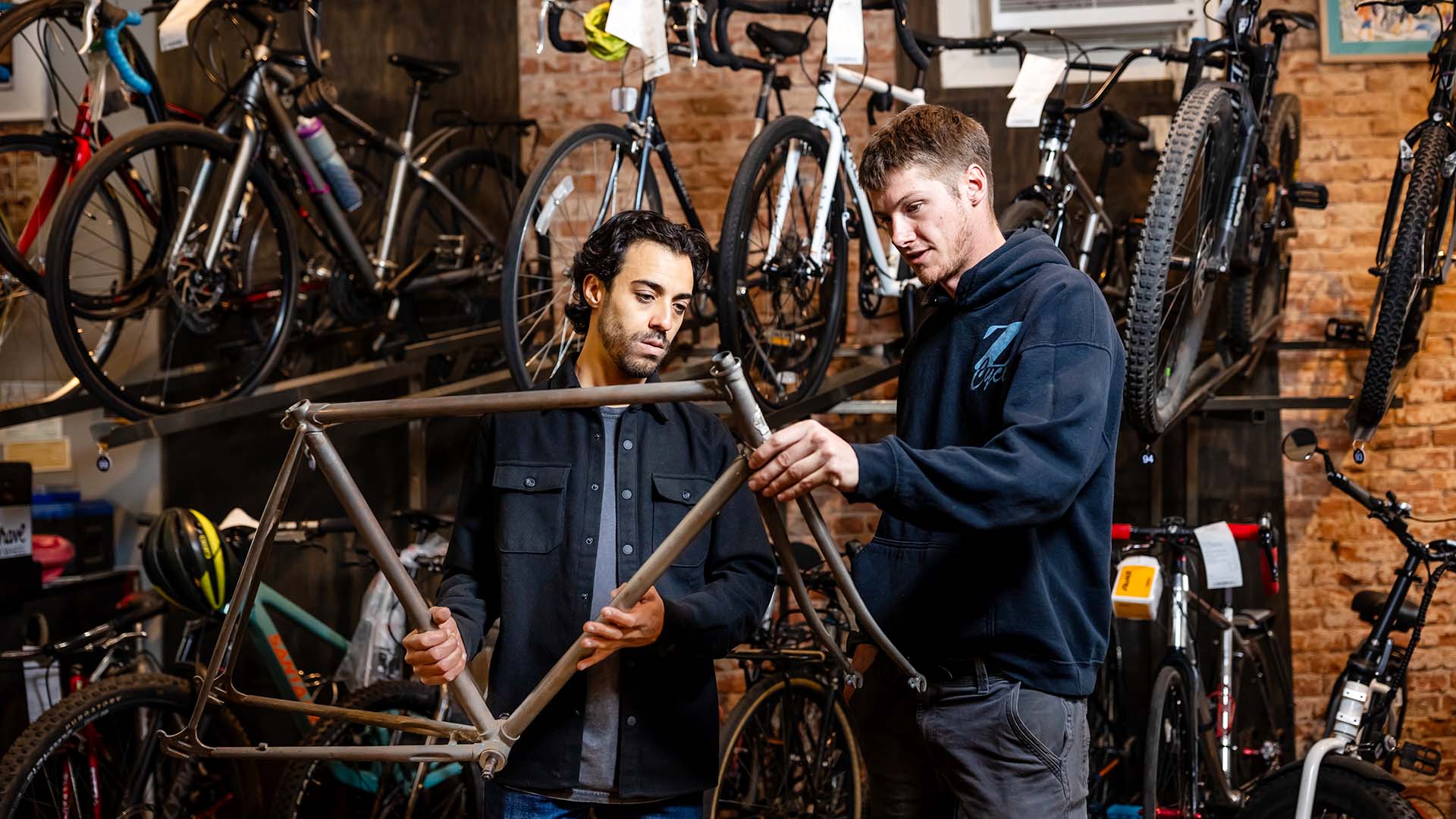When riding your bike also charges your phone
Engineering students want to add electricity to your commute, will debut charger at April 21 research conference.

Research shows that cycling to work can add years to your life. But what if it could also add hours to your battery life?
Mechanical engineering technology students at MSU Denver have developed a charging device that they believe will let you have your ride and feed your phone, too. They’ll roll out a working prototype at the University’s annual Undergraduate Research Conference on April 21.
“Coloradans love their bikes,” says senior Tristen Bryce. “When they ride, they’re creating energy. So, we thought we could take that energy and put it to work.”
After many ideas, the team landed on a sprocket that attaches to the bike’s rear spokes. Power is generated as the wheel spins, which ultimately is transferred to a battery pack mounted behind the seat. Electronics can be plugged directly into the device via a smart charger. Alternatively, you can remove the battery pack for a portable energy source.
While the charger still needs some refinements, senior Brandon Waterman sees it being a viable product on the market someday: “Our prototype is more of a proof-of-concept at this point, but I think it has potential. With some modifications – like being scaled down to a smaller size – it could be a really practical solution for bikers.”

Pedal-powered education
While the final product may generate the most excitement, the process of developing, creating and refining that product has its own inherent value.
“You learn so much by needing to think through the process,” says Waterman. “You do your own research, but you also talk to your mentor and look at what has already been done. It’s neat to take something from a simple idea to an actual usable product.”
For Waterman and Bryce, a major part of the learning process was getting more experience with 3-D printing and fabrication. Some of the charger’s components went through three iterations, each of which can take as long as 25 hours to print. With every attempt, the students got a little closer to what they needed.

“Learning through experience is exactly the point,” says Salina Blea, the program coordinator for the Undergraduate Research Conference. “Things don’t always go as planned, but when students stick with it, they’re almost always amazed by how much they get out of their projects.”
The benefits of participating in the conference extend far beyond the research project itself, according to Blea. Students also get to hone their presentation skills and learn to answer questions about their work. They develop a network with their faculty mentor and even other student-participants. And maybe most importantly, they finish with a project they can use to wow potential employers or submit to graduate programs.
The 2016 conference featured 170 presentations from nearly 300 students, spanning almost every academic discipline. More than 600 people showed up to view posters and hear students talk about their projects. Blea and faculty associate Sheryl Zajdowicz, Ph.D., expect this year’s event to be even bigger.

Another powerful project
Not to be outdone by their classmates, another student-team from MSU Denver’s Mechanical Engineering Technology Program is also developing a battery-powered project.
It’s called the Breeze Battery, and as the name suggests, it uses the wind to create energy.
If you’re imaging a giant white windmill perched on hill, you’re not too far off track. But this wind turbine is small enough to attach to a hiking pack, making it perfect for trips into Colorado’s back country.
Senior Christian Sroka, a Colorado native, says the idea came from his own experiences as an outdoor enthusiast and an interest in renewable energy. “We spend a lot of time hiking and camping here, but our electronics aren’t really built for that,” he says. “The Breeze Battery can be set up at a campsite or anywhere and store power while you’re enjoying your hike.”

Sroka notes that while phones and tablets are the first items that come to mind, devices like lanterns, flashlights and GPS tools now feature USB ports, which allow for easy charging.
The breeze battery is 4 feet tall with tripod-like legs to help it remain stable in wind. The sail at the top is designed to collect the breeze from any direction, so you don’t need to move it around for optimal use. The whole device can be folded to half its size and weighs around 10 pounds.
Sroka and his team received an undergraduate research mini-grant from the Applied Learning Center to help fund the project. He expects the funding to cover the full cost of the project.

The team is currently putting the finishing touches on its prototype and getting geared up for the conference. After more than a year of work, they’ll finally be able to share their research and results with others.
If all goes according to plan, the Breeze Battery will blow people away.







